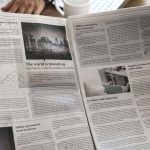Top news of the week
Bad Loans of Indian Banks expected to be at decades low of 4% by FY24
According to a Crisil report, Indian banks are expected to witness a 90 basis points fall in gross non-performing assets (NPAs) to 5% in this fiscal year to March and further improve to 4% by end of March 2024. The key indicator of banks’ asset quality is likely to improve riding on post-pandemic economic recovery and higher credit growth. Loans of Indian banks jumped 15.5% in the two weeks to August 26th from a year earlier, while deposits rose 9.5%, latest RBI data showed.
The asset quality of the banking sector will also benefit from the proposed sale of NPAs to the National Asset Reconstruction Company Ltd (NARCL). A good amount of clean up through sale of NPAs to NARCL is expected to help banks contain reported gross NPAs by 50 basis points.
The biggest improvement will be in the corporate segment, where gross NPAs are seen falling below 2% next fiscal from a peak of 16% as on March 31, 2018, the ratings firm said. This asset quality improvement in the corporate segment follows a significant clean-up of bank books and strengthened risk management and underwriting. This has also led to increased preference for borrowers with better credit profiles, implying banks are shunning lower graded borrowers.
Meanwhile, the retail segment stayed resilient and gross NPAs are expected to remain range bound at 1.8-2.0% over the medium term.
Other Highlights of the Week
FIDC to create a refinance body for NBFC
The Finance Industry Development Council (FIDC), a representative body of asset and loan financing of non-banking finance companies (NBFCs) registered with RBI, has sought creation of a dedicated refinance body.
At a time NBFCs are expected to demonstrate faster growth in line with the improvement in the economy, stronger balance sheet, higher provisions and improve capital positions in the post-pandemic period, there is a dire need to have a dedicated refinance body to help smaller borrowers. Also in a view of protecting the unique character of the NBFC model when it comes to harmonisation of regulatory norms with banks and other financial institutions.
Cash deficit in banking system
Banking system liquidity slid to a deficit for the first time in over three years, squeezed by advance tax payments and ballooning government cash balances. The net liquidity injection was INR 21,873.43 crore on Tuesday, bucking the trend of a surplus for the first time since May 2019, according to RBI data compiled by India Ratings. Net surplus liquidity in the banking system was at Rs 8.03 lakh crore about a year ago.
According to the director of India Ratings, the “Deficit banking system, though frictional, validates shift in policy strategy from accommodative to tight “This will enable the MPC (monetary policy committee) to shift the policy stance to neutral from accommodative.”
“The RBI is likely to focus on longer-term variable rate repos to ease systemic liquidity with a lower likelihood of a reversal of the recent CRR (cash reserve ratio) hike,” said Aditi Nayar, chief economist at ICRA Ratings. “Some guidance on liquidity is likely to accompany the monetary policy outcome next week. While frictional stress related to tax outflows would ease going ahead, we are awaiting the data on durable liquidity to gauge whether that too has dropped.”
Central Bank exits PCA framework
The Reserve Bank of India has taken state-owned lender Central Bank of India out of prompt corrective action (PCA) restrictions, subject to certain conditions and continuous monitoring.
The Mumbai-based lender is the last one to exit the PCA framework, which is triggered when banks breach three primary risk thresholds based on parameters such as net non-performing assets, minimum capital criteria and return on assets. The bank has provided a written commitment that it would comply with the norms of minimum regulatory capital, net NPA and leverage ratio on an ongoing basis. It has also apprised the regulator of the structural and systemic improvements that it has put in place to to meet these commitments.



